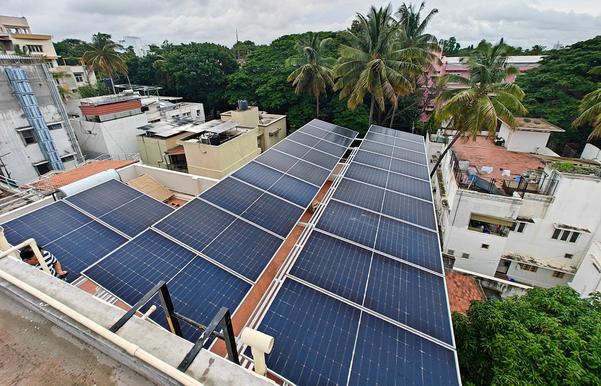An on-grid solar power system is a solar energy solution that is directly connected to the utility grid. It is designed primarily to reduce electricity bills by offsetting grid consumption but does not provide power during outages. The system begins with solar panel installation, typically on rooftops, where panels capture sunlight and convert it into direct current (DC) electricity. This DC output is then fed into an inverter, which converts it into alternating current (AC) suitable for powering household or business appliances. In addition to conversion, the inverter also ensures that the system’s output is synchronized with the grid’s voltage and frequency. The generated energy is first used to meet the immediate electrical load of the premises. When solar production exceeds consumption, the surplus energy is exported to the utility grid. Conversely, when demand is higher than solar generation, the shortfall is automatically imported from the grid. This balance between export and import is managed seamlessly by the system. Energy flow is tracked through a net meter, which records both imported and exported electricity. At the end of each billing cycle, the utility company calculates the difference. If exported energy exceeds imported energy, the consumer is compensated at a specified rate (for example, ₹3.86 per unit without subsidy, as in the case of BESCOM). If consumption from the grid is higher, the consumer pays only for the net difference at the prevailing tariff. Despite its benefits, an on-grid solar system has some limitations. It does not include energy storage and therefore offers no backup power during outages. Additionally, grid availability is essential for operation, as the inverter is programmed to shut down during power cuts to prevent 'islanding,' a safety mechanism that protects utility workers and infrastructure. In conclusion, an on-grid solar power system is an effective and efficient way to reduce electricity bills and contribute to cleaner energy use. However, it remains dependent on the utility grid and is not suitable for areas that experience frequent power interruptions or where grid independence is a priority.

